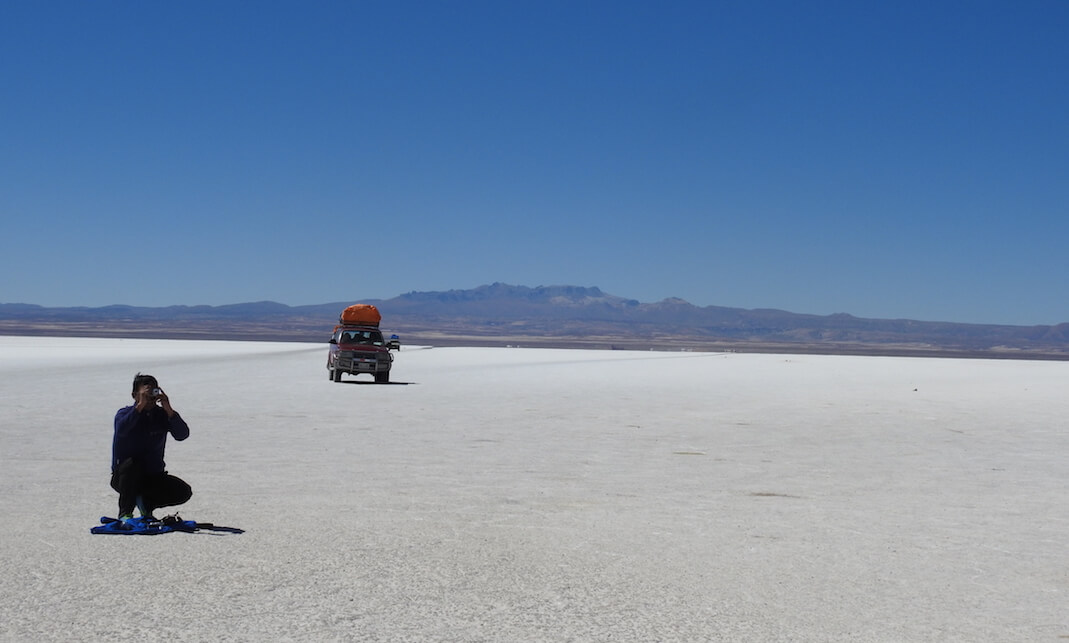 It’s only 10pm, but everyone has retreated to bed except five of us playing cards next to a heater in the hostel dining room.
It’s only 10pm, but everyone has retreated to bed except five of us playing cards next to a heater in the hostel dining room.
“Deal another round,” I say, “I’m going nowhere.” I’m the coldest I’ve ever been, and sleep seems unlikely when the temperature is minus 12 degrees C, there’s no hot water for showers, the beds are hewn out of salt blocks and six people are sharing every room.
That’s life in Bolivia’s Salar de Uyuni, a stunning desert of salt formed when tectonic shifts raised the Andes and left an ancient lake floundering and slowly drying out. These are the largest salt flats in the world, with bubbling hot springs, a geyser shooting out hot steam and rocks scoured into weird shapes by the chilly wind. We admire a lagoon tinged vivid red by its algae and filled with flamingos, scenically set to the dramatic backdrop of the snowy Andes. We pick our way through snow that's been wind-whipped into daggers of ice, and explore a raised island on the flat plains still guarded by giant cacti planted by the Incas 500 years ago
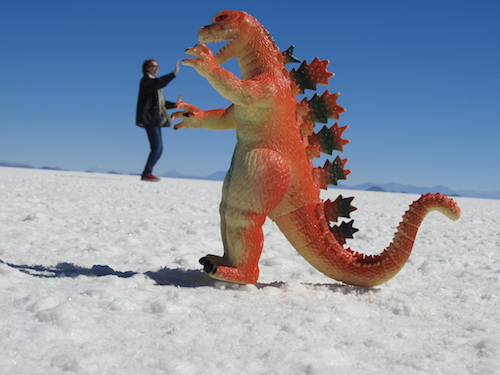 Then our jeep stops for a silly photo session based on the absence of any landmarks to add perspective. Our guide becomes a creative cameraman, lying on the dazzling white ground and placing a toy dinosaur in front of the lens. He waves me back and further back, until tiny me seems to be high-fiving a huge T-Rex. Yes, I know it’s daft, but you don’t come to Bolivia for sophisticated entertainment.
Then our jeep stops for a silly photo session based on the absence of any landmarks to add perspective. Our guide becomes a creative cameraman, lying on the dazzling white ground and placing a toy dinosaur in front of the lens. He waves me back and further back, until tiny me seems to be high-fiving a huge T-Rex. Yes, I know it’s daft, but you don’t come to Bolivia for sophisticated entertainment.
Actually, not many people go to Bolivia at all, and there’s good reason for that. Its untamed scenery demands resilience from adventurers who don’t expect everything to run smoothly - or to assume that things will work at all.
Spanish conquistadors overran Bolivia in the 1540s, leaving it Spanish in language and Catholic by name. But that’s just a veneer over the strong indigenous Aymara and Quechua cultures that were never quashed. Ancient beliefs still bubble below a semi-modern façade, with a lax attitude towards rules and regulations and a heady sense of witchcraft and wildness swirling through the atmosphere.
Our arrival was suitably illegal too. My tour group was messing around on Lake Titicaca between Peru and Bolivia when a long-running Peruvian teacher’s strike threatened to boil over into blockades on the roads. Our guide decided we should leave Peru immediately, so we chugged frantically back to shore on our ancient, spluttering boat, dashed to the hotel to pack in five minutes flat, commandeered a couple of taxis and breathlessly flung ourselves on the last bus out of town.
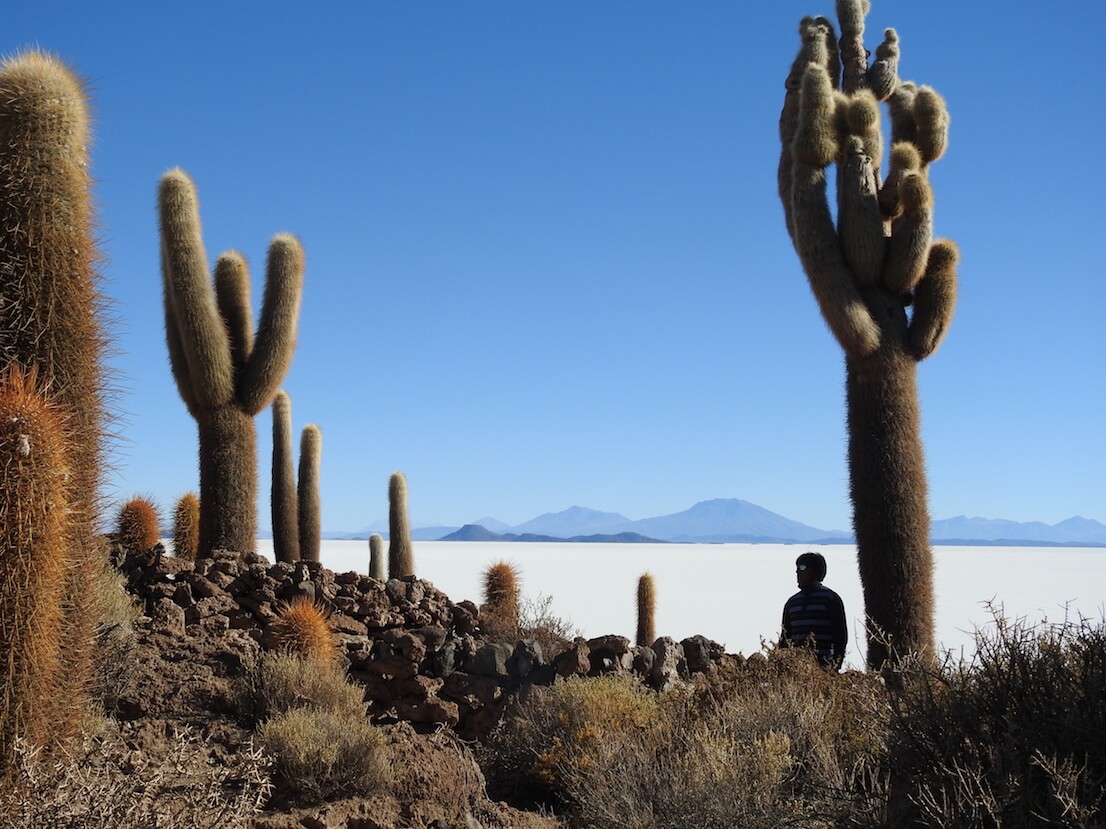 At the border post we were stamped out of Peru, and set off across no man’s land towards Bolivia 100m away. It was cold, dark and raining, and suddenly someone cursed that the border post was closed. Our Peruvian driver conferred with the Bolivian bus driver who had come to meet us, and their whispered verdict was urgent. “Get all your bags off the bus and walk across the border. Don’t stop, and do it quickly.”
At the border post we were stamped out of Peru, and set off across no man’s land towards Bolivia 100m away. It was cold, dark and raining, and suddenly someone cursed that the border post was closed. Our Peruvian driver conferred with the Bolivian bus driver who had come to meet us, and their whispered verdict was urgent. “Get all your bags off the bus and walk across the border. Don’t stop, and do it quickly.”
We skirted the boom gates, passed a couple of soldiers cradling guns and walked as nonchalantly as a bunch of illegal immigrants can to the bus on the other side. As the last person climbed aboard we screeched away, and I wondered if anyone had done a head count.
Then I peered into the darkness and realised our bus was hurtling at speed around hairpin bends on Andean mountain precipices. We’d made it over the border, but the national road to La Paz crosses Lake Titicaca where’s no bridge, just a boat that stops at 9pm. The driver was shouting into his phone trying to delay the boat as he swung wildly and one-handedly around more switchbacks.
Finally I saw the glimmer of water ahead, but no boat. “There’s no boat!” I yelled as the bus ran off the tarmac, bounced onto the shingle and aimed straight at the water. Then I realised that the tiny wooden platform we’d driven onto was the ‘boat’, powered by an outboard motor. With cool, clear-headed determination I forced open a window, ready to clamber out when we sank into icy oblivion. After a nail-biting 15 minutes our piece of wood scraped against the planks of the jetty, and the bus expanded with our collective sigh of relief.
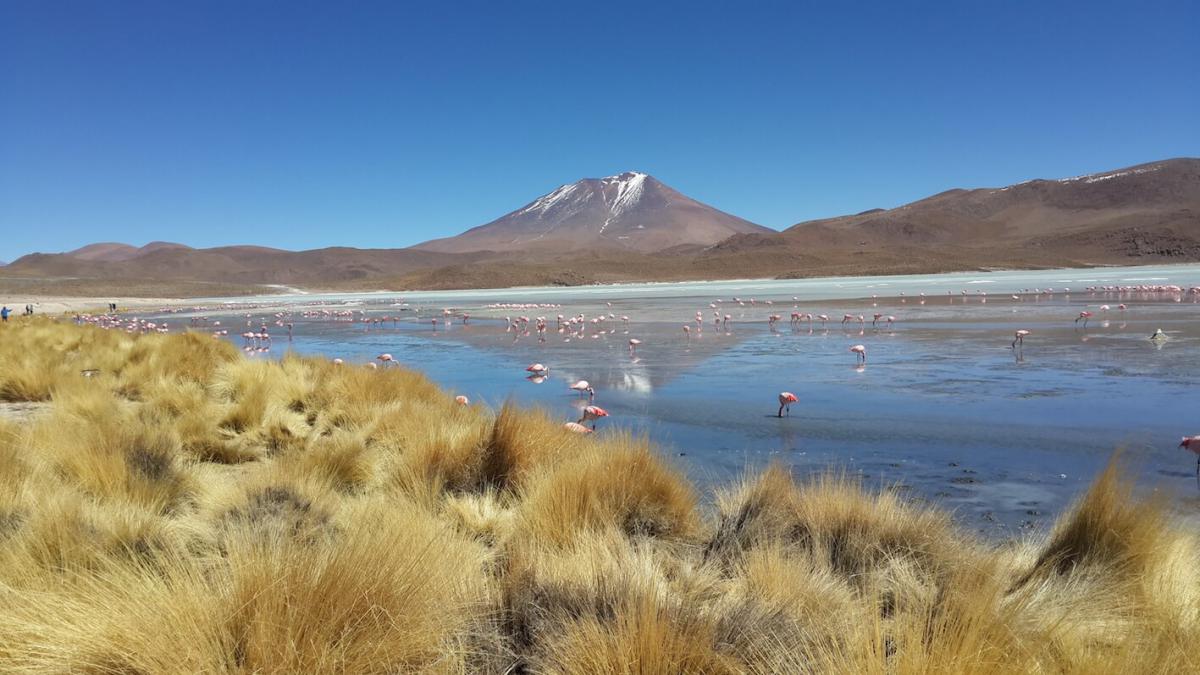 The next morning saw us queuing at the immigration office in La Paz, where we spent three baffling hours filling in forms to explain that we'd crossed the border after it closed but would very much like to stay for a few days without going to jail, please.
The next morning saw us queuing at the immigration office in La Paz, where we spent three baffling hours filling in forms to explain that we'd crossed the border after it closed but would very much like to stay for a few days without going to jail, please.
That involved paying a fine at nearby bank, where the cashier scrutinised my newly acquired Boliviano notes with suspicion. “Are there many fake bank notes in Bolivia?” I asked politely. Yes, he said, and these are some of them. “But I got them from the bureau de change,” I wailed, and he raised an utterly unsurprised eyebrow.
La Paz sprawls across a valley with endless shacks and houses clinging at gravity-defying angles to the mountains. The transport system includes three cable car routes that are great for commuters and fabulous for tourists, who can pay about R5 for a trip up the hills to see ordinary life and wonderful panoramas. At an altitude of 3,650m it’s the highest capital in the world and literally takes your breath away, as if air is passing in front of you but not quite entering your lungs. So you rest a while to let your erratic heartbeat slow. After a couple of days I feel a sore throut developing, so I track down a pharmacy and mime where it hurts. The spray they sell me is effective, but I fear it's dissolved my throat into oblivion rather than cured it.
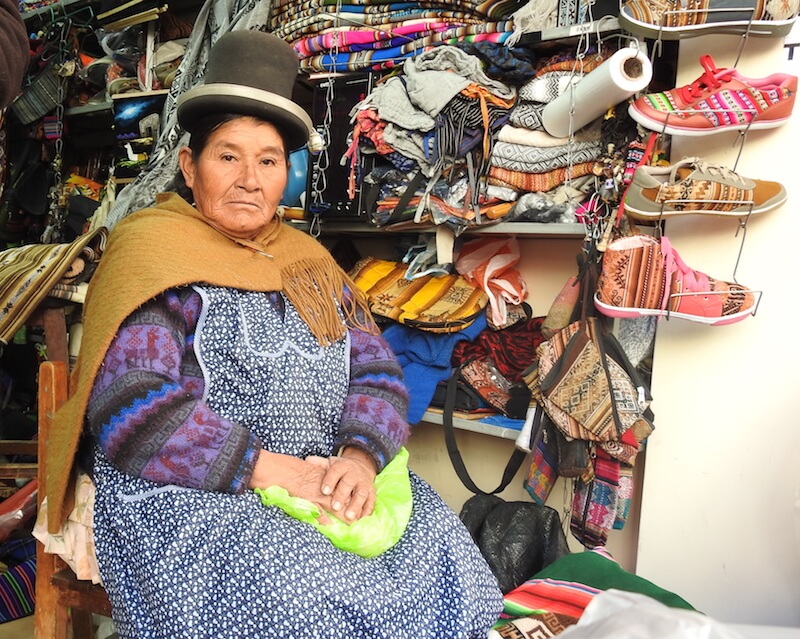 The most famous and macabre attraction in La Paz is the fascinating Witches’ Market, where stalls are crammed with love potions and herbal remedies. Dangling above them are white, furry llama fetuses, ready for burying in the foundations of every new building as an offering to Pachamama, the Mother Earth.
The most famous and macabre attraction in La Paz is the fascinating Witches’ Market, where stalls are crammed with love potions and herbal remedies. Dangling above them are white, furry llama fetuses, ready for burying in the foundations of every new building as an offering to Pachamama, the Mother Earth.
There’s a far larger witches’ market that tourists are advised not to visit without a guide, because this is a poor city with skilful pickpockets. There’s another reason to stay away too, says my guide on a Red Cap Walking Tour. A llama fetus is a pretty puny offering for any new large buildings, so urban legend says a sangoma will find a homeless person, ply them with alcohol till they pass out, then bury them alive under the concrete as a human sacrifice. Foreigners are worth more, he jokes, so if someone tries to pick you up with offers of free drinks, say no.
The Red Cap tours start outside San Pedro prison, a notorious complex where the criminals run shops and restaurants, share their cells with their wives and children, and enjoy good internet access thanks to a strong signal from the hotel next door. The jail once housed a flourishing cocaine lab too, with the end product lobbed over the walls to waiting colleagues.
An amble away is Plaza Murillo, the main square where the presidential building has been damaged several times in various uprisings. In 1946 the president was flung from its second floor balcony by a raging mob, then hung from a lamppost in the plaza. Afterwards they figured he wasn’t too bad as presidents go - which they do, at a rate of 164 in the last 200 years - so they erected a bust of him near his lamppost.
The leafy square is ful of gorgeous old colonial buildings and foraging pigeons, and it's the perfect place to sit and watch life go by in a rebellious, fiesty country that feels unlike any other I've ever visited. The ornate Congress building facing the square boasts a clock that runs backwards, apparently designed as a snub to the Spanish who believe Bolivia has regressed since gaining independence in 1825. I see it as a country that chose to return to its intriguing roots.